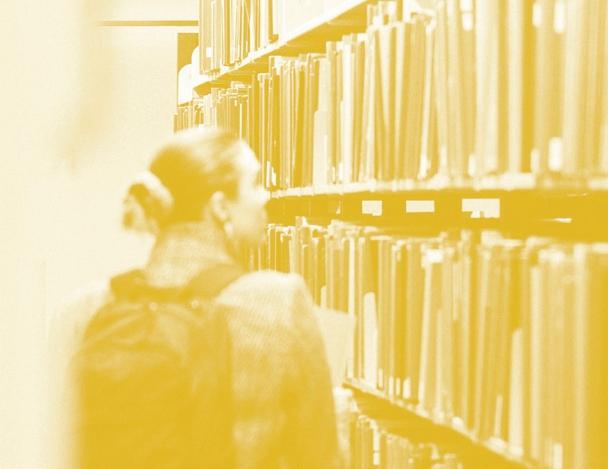


Concert November 24, 2024


















Concert November 24, 2024














Jack, Joseph and Morton Mandel Concert Hall at Severance Music Center Sunday, November 24, 2024, at 3 PM
Daniel Reith, conductor
LILI BOULANGER (1893–1918)
AARON COPLAND (1900–1990)
SERGEI RACHMANINOFF (1873–1943)
D’un matin de printemps (Of a Spring Morning)
Suite from Appalachian Spring (1945 orchestration)
INTERMISSION
Symphony No. 2 in E minor, Op. 27
I. Largo — Allegro moderato
II. Allegro molto
III. Adagio
IV. Allegro vivace
This program is about 1 hour 30 minutes in length.
Major support for The Cleveland Orchestra Youth Orchestra is provided by The Geoffrey and Sarah Gund Endowment.
This evening’s concert will be broadcast on Ideastream/ WCLV Classical 90.3 FM on Sunday, January 26, at 4 PM.
Composed: 1917–18
Duration: about 5 minutes
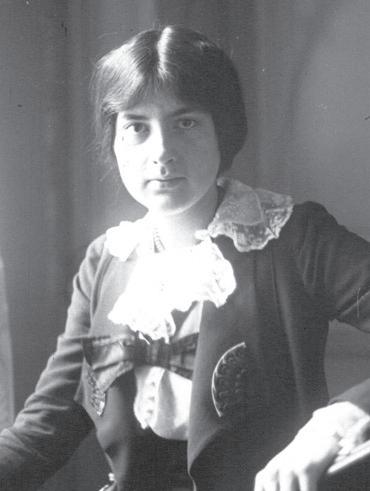
BY Lili Boulanger BORN
August 21, 1893, in Paris
DIED
March 15, 1918, in Mézy-sur-Seine, France
Lili Boulanger was born into a family of musicians in late 19th-century France. Her father, Ernest , was a composer, her mother, Raïssa , was a singer, and her sister, Nadia , six years her senior, was a composer who became one of the most celebrated teachers of musical composition in the 20th century.
So it was no surprise that Lili’s musical talents were apparent from an early age. But she was also plagued by ill health from age 2, when she contracted a severe case of bronchial pneumonia. She continued to suffer from ailments, most likely due to Crohn’s disease, which caused her severe intestinal distress, leading to her untimely death at age 24. Despite these physical limitations, Lili was able to pursue composition studies through family connections and proximity to Paris’s top musical minds. Paul Vidal , who taught a highly regarded composition class at the Paris Conservatory, lived in her apartment building and provided her with private classes, and Gabriel Fauré, a mentor to Nadia, checked up on the younger sister as well.
In 1903, the French government allowed women to enter the competition for the Prix de Rome, which Ernest Boulanger won in 1835 and remained the highest honor in the country for aspiring composers. Its prize was a four-year residency at the Villa Médici in Rome. Nadia entered the competition four times, making it to the final round in 1907, but never won.
Lili watched her sister’s repeated attempts, and at age 16, told her mother that she would dedicate herself to winning the prize that eluded her sister. Lili made her first attempt in 1912, but withdrew due to health issues. The following year, she redoubled her efforts and became the first woman to win the prestigious prize. Along with her cantata Faust et Hélène, her “frail grace” — notably contrasted against Nadia’s more commanding demeanor, threatening preconceived notions of femininity — moved the jury.
Lili’s subsequent arrival in Rome was delayed several times due to her health, and her residency was cut short due to World War I. Perhaps more importantly, the Prix de Rome prompted the prominent publisher Ricordi to offer Lili a contract, guaranteeing a platform for her work.
D’un matin de printemps (Of a Spring Morning) was one of the last works Boulanger wrote in her own hand. (She dictated her final composition, Pie Jesu , to Nadia.) At least two iterations of the piece preceded this orchestral version, one for violin or flute and piano and another for piano trio.
The French title suggests Lili’s Impressionistic leanings; its delicate beginning, with the initial melody carried by the flutes, evokes a crisp wind after a rainstorm. This is calm at first but then begins to pick up life and speed, filled with shimmering orchestral colors from the woodwinds, celesta, and triangle, as if the world is waking up.
A sense of melancholy enters in the middle section that features a plaintive air voiced by solo violin, a poignant reminder that with life also comes suffering — a truth of which Lili was intimately aware. But this interlude does not last long and the piece grows in vitality toward a rousing end. D’un matin de printemps is, above all, about beginnings — the start of a new day, the emergence of life after a long winter of hibernations, and the promise of what lies ahead.
— Caroline Godard and Amanda Angel
Caroline Godard is a PhD candidate in French at the University of California, Berkely. Amanda Angel is the former Managing Editor of Content for The Cleveland Orchestra.
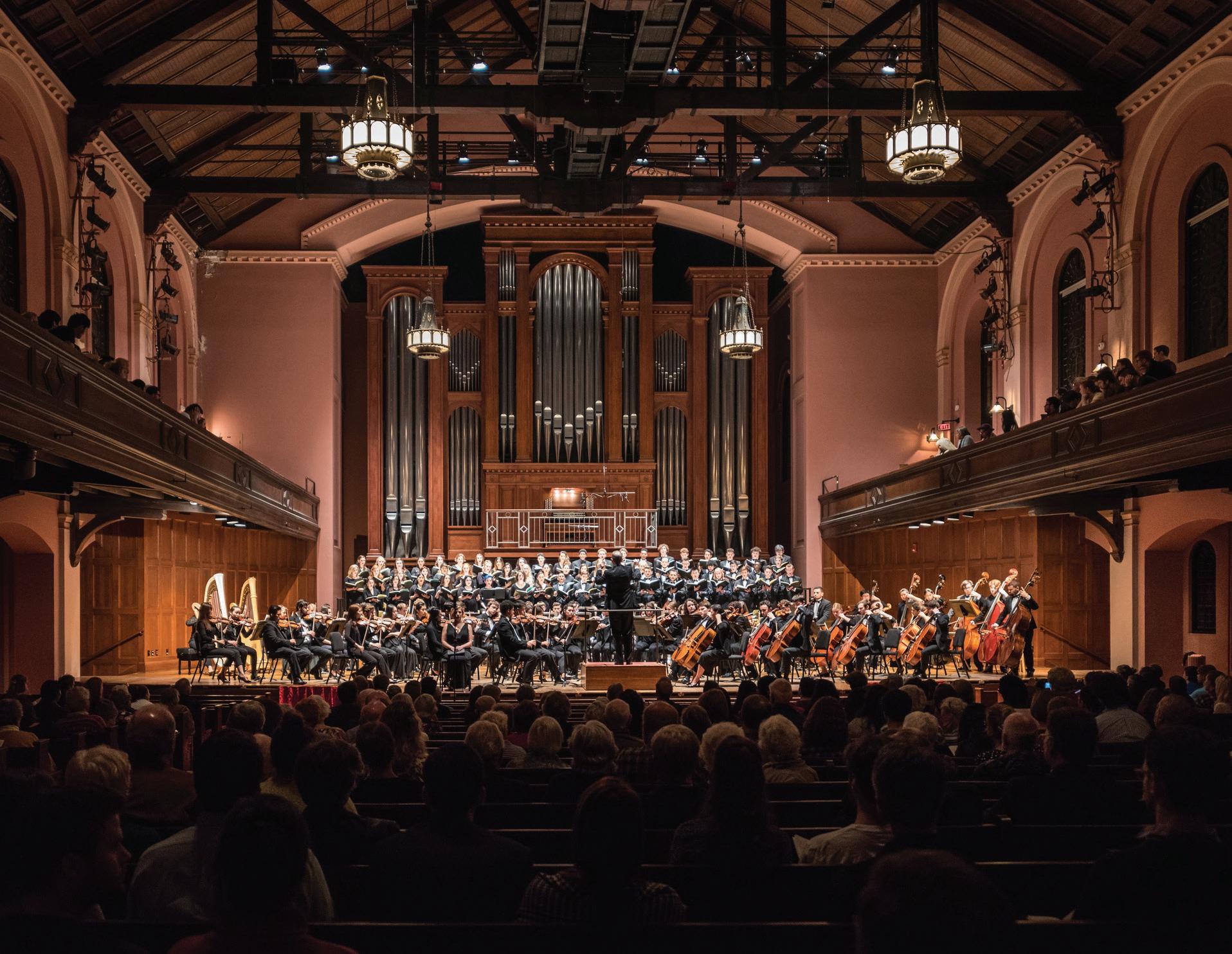
At Oberlin, you don't line up behind graduate students vying for ensemble positions, world premiere performances, or touring opportunities. You're at the center of the action from day one. Learn more at oberlin.edu/conservatory.
Composed: 1944 for chamber ensemble; arranged for orchestra in 1945
Duration: about 25 minutes
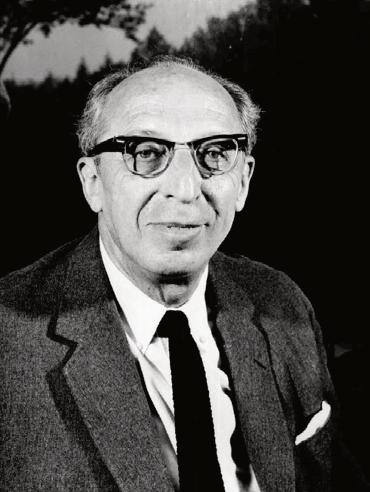
BY Aaron Copland BORN
November 14, 1900, in Brooklyn, New York
DIED
December 2, 1990, in Sleepy Hollow, New York
Aaron Copland’s original title for Appalachian Spring was Ballet for Martha . This “Martha” was Martha Graham , the grande dame of modern American dance theater. Composer and dancer had long been great admirers of each other’s work when Graham commissioned Copland to write the music for one of her new ballets. At the premiere in October 1944 — held at the Library of Congress in Washington, DC — Appalachian Spring was presented as part of a triple bill that also included ballets with music by Darius Milhaud and Paul Hindemith .
For her collaboration with Copland, Graham had conceived a ballet taking place in rural Pennsylvania at the beginning of the 19th century. She had not found a title for this work until shortly before the premiere, when she came upon the long poem The Bridge by American poet — and former Cleveland resident — Hart Crane. In it, a section called “The Dance” includes the line “O Appalachian Spring!”
Copland later recalled Graham saying, “The title really has nothing to do with the ballet, I just liked it.” Nevertheless, it was an extremely well-chosen title.
Copland wrote: “I can’t begin to tell you how often people have come up to me and said, ‘Mr. Copland, when I hear your score, I can just see the Appalachians and feel spring!’”
By this point, Copland had already written two ballets on American themes — Billy the Kid and Rodeo Appalachian Spring, however, is different from its predecessors in that its mood is gentle and lyrical from beginning to end, whereas the earlier works had included rough-and-tumble cowboy scenes.
The preface to the printed score provides a summary of the action, written by Edwin Denby :
The work concerns a pioneer celebration in spring around a newly built farmhouse in the Pennsylvania hills in the early part of the last century. The bride-to-be and the young farmerhusband enact the emotions, joyful and apprehensive, which their new domestic partnership invites. An older neighbor suggests, now and then, the rocky confidence of experience. A revivalist and his followers remind the new householders of the strange and terrible aspects of human fate. At the end, the couple are left quiet and strong in their new house.
Although the various musical sections are contrasted in tempo and character, a few recurrent melodic motifs run through the entire work, giving the score a remarkable sense of unity and a fundamental aura of peace and love. A crystallizing moment is the appearance of the Shaker melody “Simple Gifts,” which expresses the joy and contentment of the protagonists accepting the gift of life.
In 1945, Copland received the Pulitzer Prize for Music for Appalachian Spring. That same year, he condensed the original ballet music into a suite, “retaining all essential features but omitting those sections in which the interest is primarily choreographic,” as he himself explained. (He also adapted the music for full orchestra, expanding it from the ballet’s original chamber ensemble of 13 instruments.) In this form, Appalachian Spring started a life of its own away from the ballet stage and quickly became a universal concert favorite. As Copland wrote, “This piece had a great deal to do with bringing my name before a larger public.”
— Peter Laki
Peter Laki is a musicologist and frequent lecturer on classical music. He is a visiting associate professor of music at Bard College.


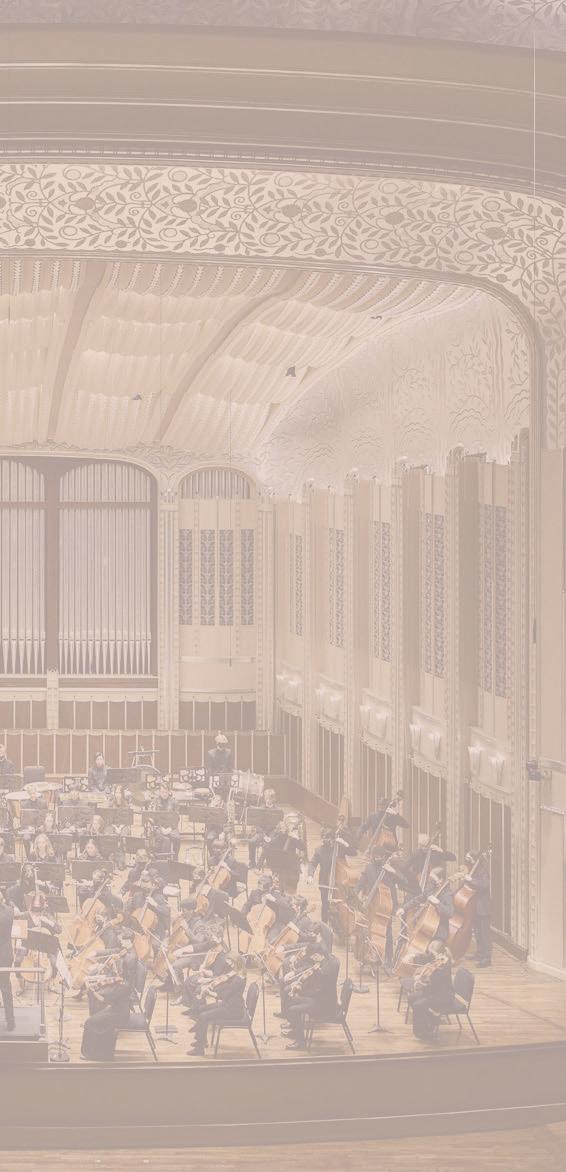

Composed: 1906–07
Duration: about 60 minutes

BY Sergei Rachmaninoff
BORN
April 1, 1873, in Semyonovo, Russia
DIED
March 28, 1943, in Beverly Hills, California
Johannes Brahms is well known for a long reluctance to compose his First Symphony, until he felt old enough and mature enough (he was 43 by the time of the premiere) to offer something worthy of himself and of the heritage of Beethoven’s symphonies. Beethoven himself had not written a symphony until he was 30.
For Sergei Rachmaninoff, however, the difficulty was writing not his first symphony but his second. His First Symphony was composed in 1895–96 and first performed in St. Petersburg the next year. The concert was one of the famous flops of musical history, when a poor performance incompetently conducted by Alexander Glazunov was savaged by conservative critics — and rejected by the public.
The effect on Rachmaninoff was devastating. For three years, he lost confidence in his ability to compose. His recovery was effected in part by hypnosis (or that new medical procedure allowed him to reconsider his outlook and to believe in himself again). His return to creative work was signaled by the Second Piano Concerto and its immediate success. Yet he still hesitated to attempt another symphony. Although he made some sketches in 1902, he was not ready to embark on the serious effort it needed until 1906.
At this point in his life, Rachmaninoff spent his winters in seclusion in Dresden, Germany. His summers he spent on his country estate in Russia, a perfect setting for the orchestration of a long symphony. The new work was finished the following winter and the first performance took place in St. Petersburg on January, 26, 1908, with Rachmaninoff conducting. This time, the reception was enthusiastic, and the Second Symphony was played all over the world within a few short years.
The first movement has a slow introduction which feels its way towards a climax before it subsides. There follows the movement’s main body, marked Allegro, diffident at first but soon blossoming with hidden warmth, gathering speed and intensity towards a second subject laden with rapturous lyricism. The movement’s long development section displays Rachmaninoff ’s astonishing skill in handling keys and
thematic fragments. After the formal return of the main material, a coda increases the tempo and drives home to the finish.
The second movement is not a conventional scherzo, yet it is swift and light, with touches of color from the glockenspiel in playful dialogue with the violins. The middle section is slower, with a broad melody on the violins. The clarinet introduces the theme with a figure that came back to Rachmaninoff when composing his Symphonic Dances toward the end of his life. Most unexpectedly, this movement breaks into a wild fugue led off by the second violins, and within the fugue there appears an extraordinarily delicate passage of what can only be described as ballet music, involving the heavy brass playing pianissimo.
The slow movement is one of Rachmaninoff ’s most glorious creations, rich and melodious in every detail. Snatches of the first movement are incorporated into the texture and a grand climax is reached using Tchaikovsky ’s formula of pushing the top line ever higher and the bass line ever lower. Once again, the richness of the themes take a long time to work themselves out before the movement can close.
The final movement is also long, but it moves with feverish energy, relaxing only when the grand tune, which we have come to expect in the finales of Russian symphonies, makes its splendid appearance against throbbing triplets. This melody rises and falls with great strides and firmly seals this remarkable triumph of symphonic literature.
— Hugh Macdonald
Hugh Macdonald is Avis H. Blewett Professor Emeritus of Music at Washington University in St. Louis. He has written books on Beethoven, Berlioz, Bizet, and Scriabin, as well as Music in 1853: The Biography of a Year.

Eliana Fittante is a sophomore oboist who is in her second year of playing in COYO. She also participates in cross country, show choir, and writes both creative prose and poetry. Chengyu Li is a senior cellist in her third year of playing in COYO. She plays in her school’s jazz and marching bands and enjoys making 2D animated short films.
Playing Rachmaninoff ’s Second Symphony has been a dream ever since I first heard it. Every movement is pure Rachmaninoff; while each has moments of anxiety, apprehension, and almost tangible paranoia, the symphony is packed to the brim with luscious melodies and loaded harmonies, each of which gushes with rich emotion.
To me, the symphony does an incredible job of showing the uncertainty of life. The little swells and peaks that Rachmaninoff writes seem to ask their own questions, as if the composer is pulling his hair out, deciding between what would fit in his piece and what wouldn’t. His anxiety stems from the failure of his First Symphony, ruthlessly torn apart by critics, which caused him to sink into a deep depression. Through the swells and booming climaxes, we can step into Rachmaninoff’s shoes and feel for ourselves the apprehension and uncertainty building up in his soul as he contemplates how to recover his career — if it’s even possible. This pattern continues until the end of the fourth movement, at which point Rachmaninoff lets himself go with one final triumphant moment.
This highlights another aspect of what makes Rachmaninoff’s symphony so compelling: the gorgeous melodies scattered throughout. The effortlessness with which they move and progress through different harmonies gives an unrivaled sense of euphoria to the listener, as if, in these few moments of serenity, Rachmaninoff is so overwhelmed with emotion that he has no choice but to let it all out. In these few melodies, I see Rachmaninoff showing his true potential as a composer, as if he’s telling the listener, “This is who I can really be.” It’s a way for Rachmaninoff to show what he’s really feeling besides the stress and pent-up anxiety. And because these moments are so few and far between in the piece, they’re extra cherished because they provide a little solace in an otherwise tumultuous experience.
Listening to this piece is an experience of its own and playing it has not disappointed me at all. The orchestra and I have had a lot of fun learning and rehearsing Rachmaninoff’s Second Symphony, putting our blood, sweat, and tears into making every moment “pop” as the composer intended.
— Aiden Tian
Aiden Tian is a senior cellist who is in his fourth year playing in COYO. He also enjoys doing Science Olympiad, woodworking, and coaching a string quartet, and hopes to study engineering in college.
Aika Birch
CONCERTMASTER
Jackson High School
Carol Huang
ASSISTANT CONCERTMASTER
Hathaway Brown
Brayden Qi
Hawken School
Harris Wang
Solon High School
Mason Zhang
Shaker Heights High School
Lydia Andres
Homeschooled
Alice Han
Beachwood High School
Peter Dzero
Stanton Middle School
Andrew Heinzen
Cleveland Heights High School
Sophia Jiang
Solon Middle School
Elizabeth Liu
Beachwood High School
Aaron Wei
Solon High School
Julia Astorga
Homeschooled
Alex Jin
Aurora High School
Hannah Lee
Hudson High School
SECOND VIOLINS
Cyprus Foster
PRINCIPAL
Homeschooled
Avaneesh Polaconda
ASSISTANT PRINCIPAL
Strongsville High School
Chengyu Jiang
Solon High School
Cole Krajewski
Twinsburg High School
Kailani Farivar
Solon High School
William Boyd
Ursuline High School
Sujin Kim
Menlo Park Academy
Jerry Du
Hudson High School
Roan Westerbeke
Hawken School
Anika Westerbeke
Hawken School
Cailyn Hua
Western Reserve Academy
Abigail Loeffler
Homeschooled
Abby Hahnenberg
Shaker Heights High School
Esther Hayashi
Hudson High School
Arthur Zhao
Avon High School
VIOLAS
Lindsey Jones
PRINCIPAL
Homeschooled
Jason Wei
ASSISTANT PRINCIPAL
Solon High School
Jason Yi-Kun Zhao
University School
Preston Duncan
Aurora High School
Lydia Huff
Langston Middle School
Elizabeth Pineda
Hawken School
Gabi Levy
Oberlin High School
Jonah Paponetti
Shaker Heights High School
Olivia Hays
Avon High School
Chengyu Li
PRINCIPAL
Beachwood High School
Aiden Tian
ASSISTANT PRINCIPAL
Hawken School
Louis Wang
Solon High School
Nicholas Jacques
Hawken School
Elena Ziegler
Copley High School
Michael Zhu
University School
Claire Hua
Western Reserve Academy
Seraphina Huang
Menlo Park Academy
Kaiden Honaker
Twinsburg High School
Belinda Zhu
Olentangy Liberty Middle School
Cate Dzero
Western Reserve Academy
Oliver Krishnaney
University School
BASSES
Travis Phillips
PRINCIPAL
University School
Sullivan Wiggins
ASSISTANT PRINCIPAL
Shaker Heights High School
Luca Brusco
Brunswick High School
Bobby Johnston
Brecksville-Broadview
Heights High School
Kate Davis
Firestone CLC
Abigail Kovach
Lakewood High School
Giada Pulig
Avon High School
Ashley Beall C
Green High School
Cole Flores R
Strongsville High School
Zachary Moskowitz B
Shaker Heights High School
Sreehita Mudiraj
Strongsville High School
PICCOLOS
Ashley Beall B, R
Cole Flores C
OBOES
Eliana Fittante C
Ontario High School
Andrew Kelly R Bay High School
Isabel Martin
Walsh Jesuit High School
Christopher Wang B
Solon High School
ENGLISH HORN
Isabel Martin B, R
CLARINETS
Nicholas Garrett R
Cleveland School of the Arts
Willa Kenny C
Saint Joseph Academy
Evan Lee B
Hudson High School
Leia Schnell
Strongsville High School
BASS CLARINET
Willa Kenny B, R
Meghan Janke
Green High School
Alessio Matera
Lakewood High School
Bernadette Slattery B, R
Westlake High School
Angie Stump C
Copley High School
CONTRABASSOON
Alessio Matera B
HORNS
Jack Berendt C, R
Aurora High School
Olivia Simpson B
Strongsville High School
Elena Miller**
Louis Roy**
TRUMPETS
Micah Docuyanan
Strongsville High School
Carter Free
Avon High School
Sam Haskell B
Brunswick High School
Owen Rinaldo C, R
Stow-Munroe Falls High School
TROMBONES
Noah Adkins
Cuyahoga Falls High School
Grace Berendt B, C, R
Aurora High School
Lucas Marques
Westlake High School
Brennon Mitchell
Canfield High School
TUBA
Henry Foster
Copley High School
The following eight endowed Youth Orchestra chairs have been created in recognition of generous gifts to The Cleveland Orchestra’s endowment:
Concertmaster, Daniel Majeske Memorial Chair
Principal Cello, Barbara P. and Alan S. Geismer Chair
Principal Viola, Anthony T. and Patricia A.
Lauria Chair
TIMPANI
Nathaniel Pino R
Solon High School
Justin Reimschisel C
Solon High School
PERCUSSION
Matthew Arnold
Orange High School
Nathaniel Pino
Justin Reimschisel
Kelsey Rogers
Shaker Heights High School
HARP
Lina Tian B, C
Hathaway Brown
PIANO
Saya Uejima B, C
Green High School
MANAGER
Kennedy McKain
LIBRARIAN
Nick Taylor
DIRECTOR OF INSTRUMENTAL PATHWAYS
Lauren Generette
Performers are listed alphabetically within each woodwind, brass, and percussion section. Superscripts indicate principal player according to the following key:
B Boulanger
C Copland
R Rachmaninoff
** Extra/substitute musician
Principal Bass, Anthony F. Knight Memorial Chair
Principal Flute, Virginia S. Jones Memorial Chair Piccolo, Patience Cameron Hoskins Chair
Principal Harp, Norma Battes Chair
Principal Keyboard, Victor C. Laughlin M.D.
Memorial Chair
Music Director, The Cleveland Orchestra Youth Orchestra Associate Conductor, The Cleveland Orchestra, Sidney and Doris Dworkin Chair
Daniel Reith was appointed assistant conductor of The Cleveland Orchestra and music director of The Cleveland Orchestra Youth Orchestra (COYO) starting in the 2022–23 season, being promoted to associate conductor in June 2024. As COYO’s music director, Reith oversees the ensemble’s artistic planning, selects personnel for the ensemble, and leads rehearsals and performances of the Youth Orchestra. He’s also actively involved with the Orchestra’s education programs and community performances, and provides assistance for the Orchestra’s Classical and Blossom Music Festival seasons.
Reith was the 2019 winner of Opptakt, Talent Norway’s program for fostering young conductors, and has since performed with the Bergen Philharmonic Orchestra, Norwegian Radio Orchestra, Stavanger Symphony Orchestra, Trondheim Symphony Orchestra, and the Norwegian Armed Forces. In 2022, Reith made his debuts with the Kristiansand Symphony Orchestra and Oslo Philharmonic Orchestra. He also served as assistant conductor for the Norwegian Opera production of Orpheus in the Underworld .

In addition to his conducting work, Reith is a talented pianist and chamber musician, having performed in concerts and competitions throughout Germany, Norway, and other countries. Reith has been awarded several scholarships in Germany, where he’s worked with orchestras such as the Hamburg Philharmonic and Neubrandenburg Philharmonic.
Reith grew up in Bühl, Germany, and studied music in his home country as well as Norway. He received bachelor’s degrees in piano from Freiburg’s Academy of Music and the Norwegian Academy of Music. He also received a bachelor’s degree in music theory at Freiburg’s Academy of Music, followed by a bachelor’s degree in conducting at Frankfurt University of Music and Performing Arts. In 2021, he received his master’s degree in conducting at the Norwegian Academy of Music.
The Cleveland Orchestra Youth Orchestra is a full symphonic ensemble composed of 93 young musicians drawn from 36 communities in 8 counties across Northern Ohio. Founded in 1986 by Jahja Ling (then resident conductor of The Cleveland Orchestra), The Cleveland Orchestra Youth Orchestra (COYO) provides serious young music students of middle and high school age with a unique pre-professional orchestral training experience. The 2024–25 season marks COYO’s 39th season and the third under the direction of Daniel Reith .
Among the acclaimed artists to work with COYO are Marin Alsop, Pierre Boulez , Stéphane Denève, Christoph von Dohnányi , Giancarlo Guerrero, Witold Lutosławski , Yo-Yo Ma , Gil Shaham , Michael Tilson Thomas , Antoni Wit , and Cleveland Orchestra Music Director Franz Welser-Möst . The ensemble has been featured on three international tours.
The Cleveland Orchestra Youth Orchestra is part of a suite of Cleveland Orchestra programs designed to nurture aspiring young musicians, which also includes The Cleveland Orchestra Youth Chorus, The Cleveland Orchestra Children’s Chorus and Preparatory Chorus, and the Crescendo and Music Mentors pathways initiatives for students in Cleveland schools. In addition, with the support of many generous individual, foundation, corporate, and governmental funding partners, the Orchestra’s full range of education and community programs reach more than 100,000 young people and adults annually, helping to foster a lifelong relationship with music by removing barriers to participation, advocating for and helping to facilitate equitable access to comprehensive music education in schools, and harnessing the life-changing power of music in service to the community.




Perform alongside world-famous musicians. Meet talented young musicians from around the world.
Audition today and find out just how great a summer focused on your music can be.
60+ MUSIC PROGRAMS 1-6 WEEK SESSIONS GRADES 3-12



The following members of The Cleveland Orchestra have served as section coaches for the Youth Orchestra in preparation for this concert:
VIOLINS
Stephen Tavani
Assistant Concertmaster
Kathleen Collins
Elayna Duitman
Isabel Trautwein
Vladimir Deninzon Emeritus
VIOLAS
Stanley Konopka
Assistant Principal
Lembi Veskimets
Lynne Ramsey Emeritus
CELLOS
David Alan Harrell
Mark Kosower Principal
Paul Kushious
BASSES
Mark Atherton
Scott Haigh Emeritus
FLUTE
Mary Kay Fink
Principal Piccolo | Flute
OBOE
Frank Rosenwein Principal
CLARINET
Robert Woolfrey
BASSOON
Phil Austin Emeritus
HORN
Meghan Guegold Hege
Alan DeMattia Emeritus
TRUMPET
Michael Miller
TROMBONES
Shachar Israel Assistant Principal
James DeSano Emeritus
TUBA
Yasuhito Sugiyama
PERCUSSION
Donald Miller Emeritus
HARP
Trina Struble Principal
KEYBOARD
Joela Jones Emeritus
WITH SPECIAL THANKS
Michael Ferraguto Librarian

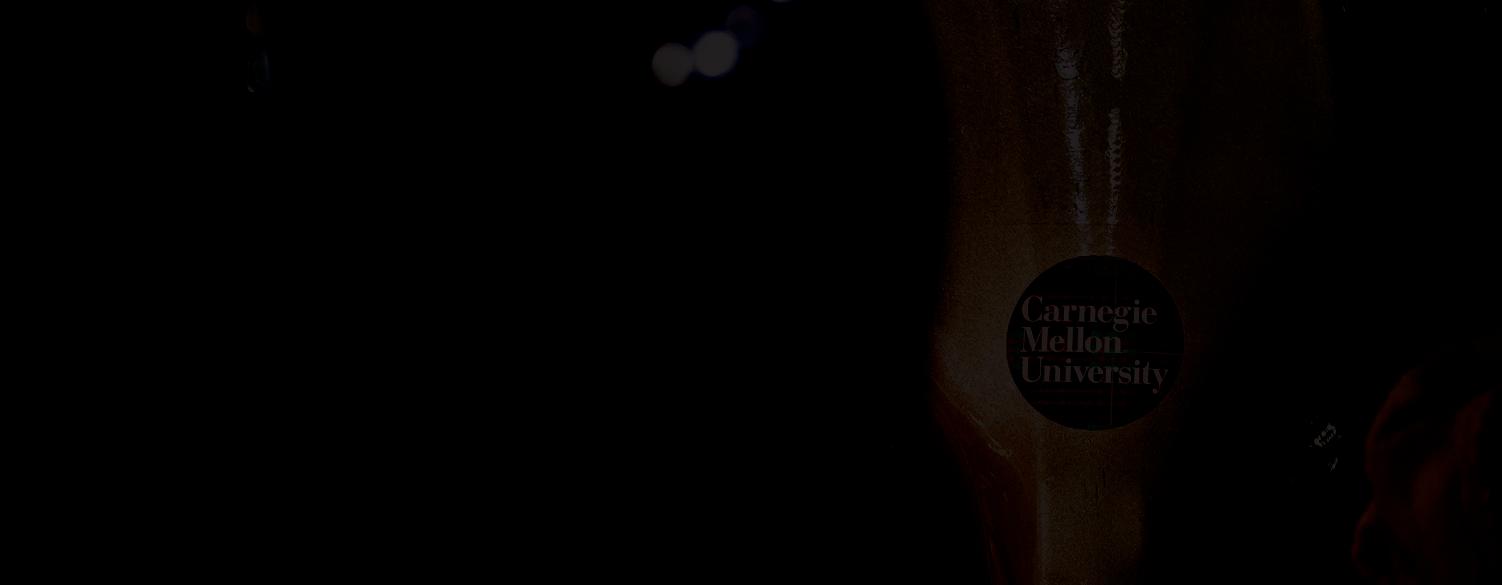






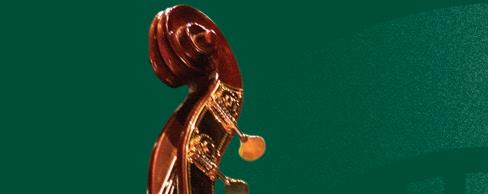



















The members of The Cleveland Orchestra Youth Orchestra express gratitude to their school music directors for the role they play on a daily basis in developing musical skills:
Jason Burdett
Aurora High School
Mason Smith
Aurora High School
Ethan Eraybar
Avon High School
Jesse Martin
Avon High School
Devon Gess
Bay High School
David Luddington
Beachwood High School
Allison Siekmann
Beachwood High School
Steven Cocchiola
Brecksville-Broadview Heights High School
Sam Portzer
Brunswick High School
Valerie Roman
Brunswick High School
Kyle O’Donnell
Canfield High School
Daniel Heim
Cleveland Heights High School
Robert Davis
Cleveland School of the Arts
Michael Foster
Copley High School
Dustin Harris
Cuyahoga Falls High School
Sloan Stakleff
Firestone CLC
Amy Rach
Green High School
Curtis Prichard
Hathaway Brown
Kyra Mihalski
Hawken School
Roberto Iriarte
Hudson High School
John Rodesh
Hudson High School
Scott Eversdyke
Jackson High School
Elizabeth Hankins
Lakewood High School
Clinton Steinbrunner
Lakewood High School
Emily Cromwell
Langston Middle School
Adonai Henderson
Menlo Park Academy
Erik Kalish
North Olmsted High School
Emily Cromwell
Oberlin High School
Amy Ruff
Olentangy Liberty
Middle School
Elijah Henkel
Ontario High School
Brandon DuVall
Orange High School
Brian Patton
Saint Joseph Academy
Bill Hughes
Shaker Heights High School
Donna Jelen
Shaker Heights High School
Robert Luce
Solon High School
Mark Mauldin
Solon High School
Gerald MacDougall
Solon Middle & High School
Garrett Doty
Stanton Middle School
Greg Newman
Stow-Munroe Falls High School
Andrew Hire
Strongsville High School
Brian King
Strongsville High School
Damon Conn
Twinsburg High School
David Kay
University School
Devon Steve
University School
Nicholas Ratay
Walsh Jesuit High School
Margaret Karam
Western Reserve Academy
Hilary Patriok
Westlake High School
The members of The Cleveland Orchestra Youth Orchestra express gratitude to their private teachers for their support, insight, and expertise:
VIOLIN TEACHERS
Masha Andreini
Gina Bagnoli
Sibbi Bernhardsson
Katherine Bormann*
Wei-Shu Co
Heather Crawford
Vladimir Deninzon
Francesca dePasquale
Wei-Fang Gu*
Liesl Hook-Langmack
Micheal Houff
Amy Lee*
Kimberly Meier-Sims
David Mendieta
Marlene Moses
Elona Pappas
Eugenia Poustyreva
James Rhodes
Sam Rotberg
Carol Ruzicka
Zhan Shu*
Laura Shuster
Yu Yuan*
VIOLA TEACHERS
Abbie Foster
Laura Kuennan-Poper
Ellen Murphy
James Rhodes
Carol Ross
Luke Wardell
Ann Yu
Louise Zeitlin
CELLO TEACHERS
Kellan Degnan
Abbey Hansen
David Alan Harrell*
Dmitry Kouzov
Paul Kushious*
Ida Mercer
Daniel Pereira
Nora Willauer
BASS TEACHERS
Steven Brija
Patricia Johnston
Tracy Rowell
Gavin VanWinkle-Bright
Susan Yelanjian
FLUTE TEACHERS
Lisa Aglioti
Linda Miller
Dawn Schwartz
Jackie Wood
OBOE TEACHERS
Carol Bernhardt
Stephanie Cohn Minter
Corbin Stair*
Danna Sundet
CLARINET TEACHERS
Meghan Colbert
Stanislav Golovin
Dick Ingersoll
Sally Kish
BASSOON TEACHERS
Lydia Byndas
Mark DeMio
Tom English
Judith Guegold
HORN TEACHERS
Alan DeMattia
Melinda Kellerstrass
TRUMPET TEACHERS
Jerry Kleman
Scott Kline
Michael Miller*
Rich Pokrywka
TROMBONE TEACHERS
Thomas Brucoli
Ty Deane
Eric Richmond
Lauren Rudzinskas
TUBA TEACHER
Kenneth Heinlein
PERCUSSION TEACHERS
Thomas Freer
Katy La Favre
Matt Larson
Jennalee Quillen
HARP TEACHER
Jody Guinn
KEYBOARD TEACHER
Haewon Song
* Member of The Cleveland Orchestra

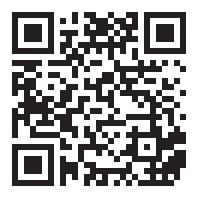

As a courtesy to the audience members and musicians in the hall, late-arriving patrons are asked to wait quietly until the first convenient break in the program, when ushers will help you to your seats. These seating breaks are at the discretion of the House Manager in consultation with the performing artists.
Please silence any noise-making devices, including cell phones and watches, prior to the start of the concert.
PHOTOGRAPHY, VIDEOGRAPHY & RECORDING
Audio recording, photography, and videography are prohibited during performances at Severance. Photographs of the hall and selfies can be taken when the performance is not in progress.
Get instant access to your tickets for Cleveland Orchestra concerts at Severance and Blossom Music Center by using the Ticket Wallet App. More information is at clevelandorchestra.com/ticketwallet
Contact an usher or a member of house staff if you require medical assistance. Emergency exits are clearly marked throughout the building. Ushers and house staff will provide instructions in the event of an emergency.
For the comfort of those around you, please reduce the volume on hearing aids and other devices that may produce a noise that would detract from the program. Infrared Assistive-Listening Devices are available. Please see the House Manager or Head Usher for more details.
Regardless of age, each person must have a ticket and be able to sit quietly in a seat throughout the performance. Classical Season subscription concerts are not recommended for children under the age of 8. However, there are several age-appropriate series designed specifically for children and youth, including Music Explorers (for 3 to 6 years old) and Family Concerts (for ages 7 and older).
Copyright © 2024 by The Cleveland Orchestra and Musical Arts Association
Editorial: Kevin McBrien, Publications Manager (kmcbrien@clevelandorchestra.com)
Design: Melissa Leone (melissa@melissaleone.com)
Program books for Cleveland Orchestra concerts are produced by The Cleveland Orchestra and are distributed free to attending audience members. The Cleveland Orchestra is proud to have its home, Severance Music Center, located on the campus of Case Western Reserve University, with whom it has a long history of collaboration and partnership.
